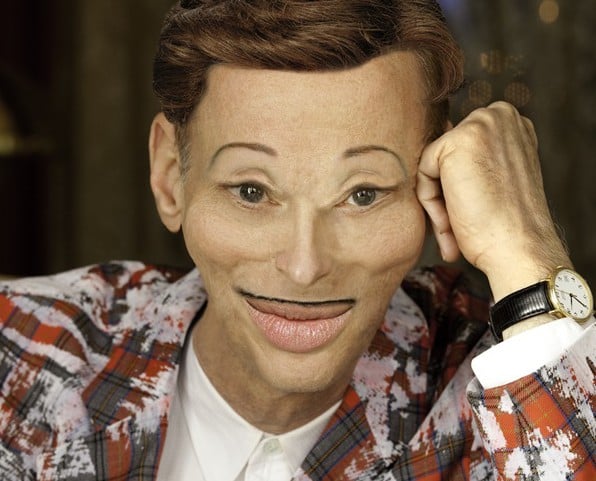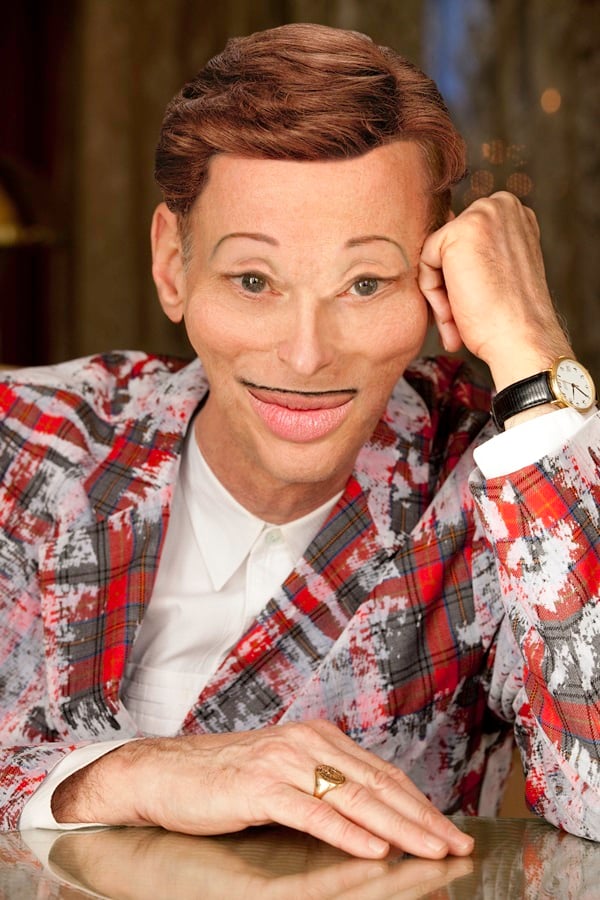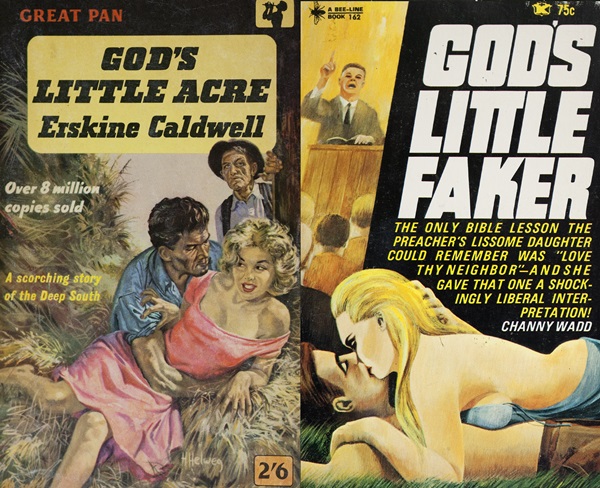Art & Exhibitions
John Waters Says “Celebrity Is the Only Obscenity Left in the Art World”
In his upcoming show, Waters delves into his ongoing sexual attractions.

In his upcoming show, Waters delves into his ongoing sexual attractions.

Eileen Kinsella


Mom and Dad (2014).
Photo: Courtesy of the artist and Marianne Boesky Gallery, New York © John Waters
In a short essay about his new show opening at Marianne Boesky Gallery in Chelsea on January 9, legendary indie filmmaker John Waters, known for trashy cult films like Pink Flamingos as well as mainstream flicks like CryBaby, asks some challenging rhetorical questions that seem directed both at himself and the viewer alike: “Since I haven’t made a film in ten years, must I give my entire life’s work a facelift? If so, should I worry that reinvention invites self-parody? Now that celebrity is the only obscenity left in the art world, where do I fit in?”
Waters says he hopes the show, titled “Beverly Hills John,” will answer those questions by delving into “my unresolved childhood fame issues, my fear of false glamour and nouveau-riche comfort, my ongoing sexual attractions and nature’s sometimes unfair punishment of such urges, and the possible horror and risk of a ‘careericide’ with dignity.” The show features more than two-dozen editioned C-prints, as well as sculpture, mixed media works, and a video featuring a new, sanitized version of Pink Flamingos.
Last month, we caught up with Waters while he was on the road with his increasingly popular and irreverent touring performance “A John Waters Christmas.” “I always try to answer any questions with humor,” he told artnet News over the phone from the Molly Pitcher Inn, a historic hotel in Red Bank New Jersey. “That is what my work has always been about—witty, but it can be funny.”
Waters said he has worked on the current show for the past two years. It marks his third solo outing at Boesky, following “Unwatchable” in 2006 and “Rear Projection,” in 2009, the latter of which was a joint effort with Gagosian Gallery in Los Angeles.
“I always sort of make fun of things I love—like when I have a piece that says Did Not Sell spelled out in red dots.” The work, a C-print titled Congratulations (2014), will be on view in the show. Or in the image Mom and Dad (above), which he describes as “the two most hideous mom and dads you could imagine.”
One much anticipated feature of the new show is Kiddie Flamingos, a G-Rated version of Waters’ early cult classic Pink Flamingos (1972). In it, a sanitized version of the original film’s script is read by child actors, which Waters has said he hopes makes the new work even more perverse than the first film. According to his essay, “If I censor my own videos like my enemies did in the past, am I transposing shock value into a new form of innocent surprise or ‘crossing over’ into sell-out territory?”

Beverly Hills John (2012).
Photo: Courtesy of the artist and Marianne Boesky Gallery, New York © John Waters
And speaking of perverse, there is also a picture of Waters, presumably after having undergone extensive plastic surgery, that renders him virtually unrecognizable but for his signature pencil-drawn mustache, and that inevitably calls to mind the extreme plastic surgeries pursued by Jocelyn Wildenstein, who became known in art world circles and beyond as “cat woman.” (Waters gives Lassie the same “botched Botox” look, as well as Justin Bieber in Justin’s Had Work, to hilarious effect.)
Waters says he also explores the notion that a movie or novel can’t be a classic “unless someone else has done a porn version of it.”

Library Science #8 (2014).
Photo: Courtesy of the artist and Marianne Boesky Gallery, New York © John Waters
Waters ponders the question, “Could a weekly trashy tabloid newspaper now cover intellectuals instead of movie stars and still be scandalous?” As Waters told us, “If I was ever going to have a tabloid, it would focus on brainiacs.” A label splashed across the front of Brainiac (2014), a C-Print of a faux tabloid cover that Waters dreamed up, blares: “Joan Didion Hits 250 Pounds?”
Marianne Boesky first started talking with Waters after the untimely death of his former dealer Colin de Land in 2003.
“John was always poking around the galleries and I’m sure I was not alone feeling a secret thrill any time he came in to see one of my shows,” Boesky told artnet News. Indeed, sightings of Waters at the numerous art fairs and gallery openings and shows he attends each year inevitably prompt excited whispers from the crowd. (This writer has witnessed at least one instance in which a person spotted Waters at a gallery and said excitedly, “There’s John Waters,” before deliberating over whether or not to approach him, and ultimately deciding not to.)
Over the past decade, Boesky has watched Waters develop as an artist and is clearly impressed by his work ethic. “John never stops. His discipline propels him to write every single day which both allows him and forces him to develop every single day as an artist, person, writer, viewer.”
Asked about his practice and keeping multiple projects going at once, Waters explained his disciplined approach. “I’m very good at compartmentalizing. Every morning when I get up I have to think something up. I’m very organized. You can ask my assistants, though they would call it something else.”
According to Boesky, Waters has a unique ability to “distill information into crystal slivers.” “His artwork,” she said, “is a visual manifestation of his cunning communication skills. He tells truth in all its finery or in all its trashy glory.”
On the subject of whether we’re to view Waters’ art as the work of a visual artist or a filmmaker, Boesky seems clear.
“At our first meeting we really spoke about our connections to Baltimore and his artwork, and I stayed away from the obvious subject of John as a filmmaker,” she said. “I knew if we worked together that my focus would be on John as a visual artist, and I think he appreciated that.”
However, Waters is less sure about how to define himself in this newer role. “I don’t ever say ‘I’m an artist’,” he said, and explained it was partly because of his own personal feelings about it. “When people tell me ‘I’m an artist,’ I think ‘Really? I’ll be the judge of that.”